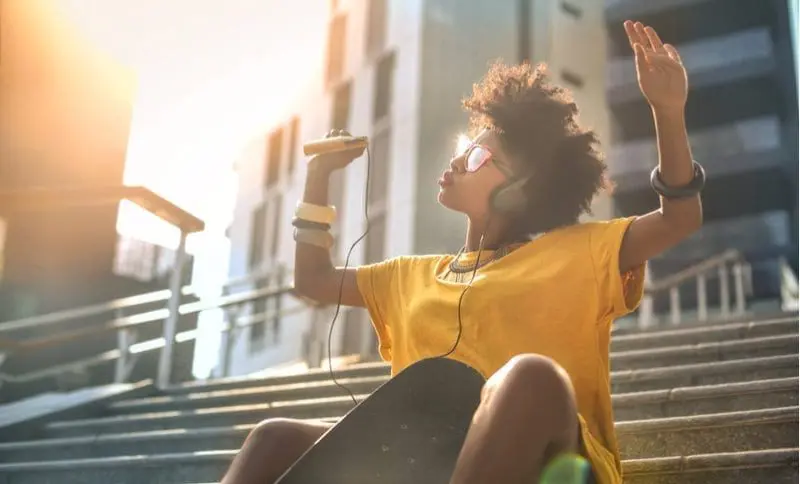
Walking, sitting, running, and even reaching for a piece of chocolate, are just a few of the many movements we make during the day.
Do you consciously think about those movements before you make them? Probably not.
So, how do you move? We’re going to explore the motor cortex function to better understand how we decide, plan, and execute movements.
The motor cortex is a complex structure that manages the way we move. It is important to know that there are voluntary and involuntary movements.
Voluntary movements are the movements we consciously think about. Involuntary movements include breathing and the beating of our hearts.
The motor cortex function is an execution of voluntary movements. Several areas of the cortex communicate with each other in order to make your body move the way you want.
There are four lobes of the brain. Along with the somatosensory cortex of the parietal lobe, and posterior parietal cortex (both of which have their own role), the main part of the motor cortex is located in the frontal lobe.
The motor cortex is composed of three main parts: the premotor cortex, the supplementary motor area, and the primary motor cortex.
The premotor cortex is in charge of sensory movement and movement control. The supplementary motor area is in charge of the movement planning and the coordination of bilateral moves.
And finally, the primary motor cortex (M1) sends information down through the spinal cord in order to move different body parts. Several segments of the primary motor cortex correspond to different body parts, where hands, feet, and face occupy a significantly bigger area than the hips or arms.
The most obvious consequence of motor cortex damage is paralysis. Depending on the damaged area, the paralysis can affect one or both sides of the body or even just one body part.
One burst blood vessel in the leg area of the cortex can cause the entire leg to paralyze, while the same size vessel can cause paralysis in only one muscle of the face.
The first issue will result in the inability to walk, while the second one will impair the communication of facial expressions, e.g. the person will not be able to frown. In these cases, motor cortex function is weakened.
It is important to note that the brain hemispheres control the opposite sides of the body. The left hemisphere is in charge of the right side of the body and vice-versa.
Some less drastic consequences of damage to the motor cortex include lack of coordination, the inability to speak clearly, delayed responses, and so on.
A motor function is the ability to perform movements. During the day we are exposed to a variety of stimuli (visual, tactile, auditory, olfactory). The most common response to those stimuli is the motor response.
Think about this: you hear a sudden loud noise. Your instinctive reaction is to jump, cover your ears, and perhaps frown or grimace.
It happens almost instantly, like a reflex. But even though some of our motor functions seem involuntary, we can be in control of these functions if we consciously choose.
Motor skills are learned throughout our lifetime. Babies’ brains create neural pathways when they first try to communicate with the world through movement.
Each time we learn a new skill, like dancing, knitting, or playing a new sport, we also create new neural pathways. The more we exercise our brain, the more connections we make and the more powerful we become.
If knowledge is power, learning is your superpower.
—Jim Kwik, the Author of Mindvalley’s Superbrain Quest
Movement isn’t just a product of motor cortex function. There are other parts of the brain that are essential for moving properly.
These are the cerebellum and basal ganglia. Unlike motor cortex function, they are mostly responsible for involuntary movement (breathing, heart rate). Of course, they also monitor voluntary movements and affect our posture and balance.
The control of movement does not stop here as there are other body parts involved in the process. For example, the spine is crucial for all feeling and movement. Think of the spine as the superhighway the nerve signals use to reach all parts of the body and brain.
Different parts of the brain all work in tandem with one another to coordinate movement and feeling. The brain is happiest when it’s moving, so stay active to keep your brain healthy and happy!
Hypnosis goes beyond making someone “fall asleep.” Here's a guide on how hypnotherapy can help… Read More
Mindset is the foundation of all things. Here’s what it is, how it serves you,… Read More
A balanced throat chakra helps us tell the truth, communicate, and express ourselves optimally. Explore… Read More
How can you put together a course that resonates, sells, and makes an impact? Discover… Read More
There’s a lot of talk about having a growth mindset. Explore what it is, including… Read More
Distractions can sometimes be the bane of your existence. But learning how to focus can… Read More